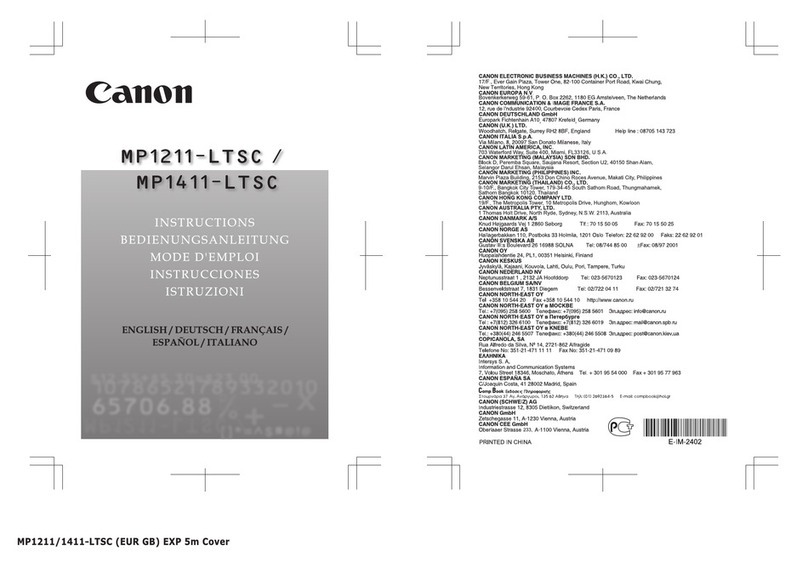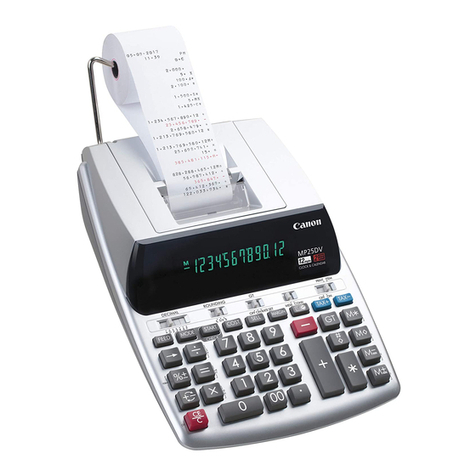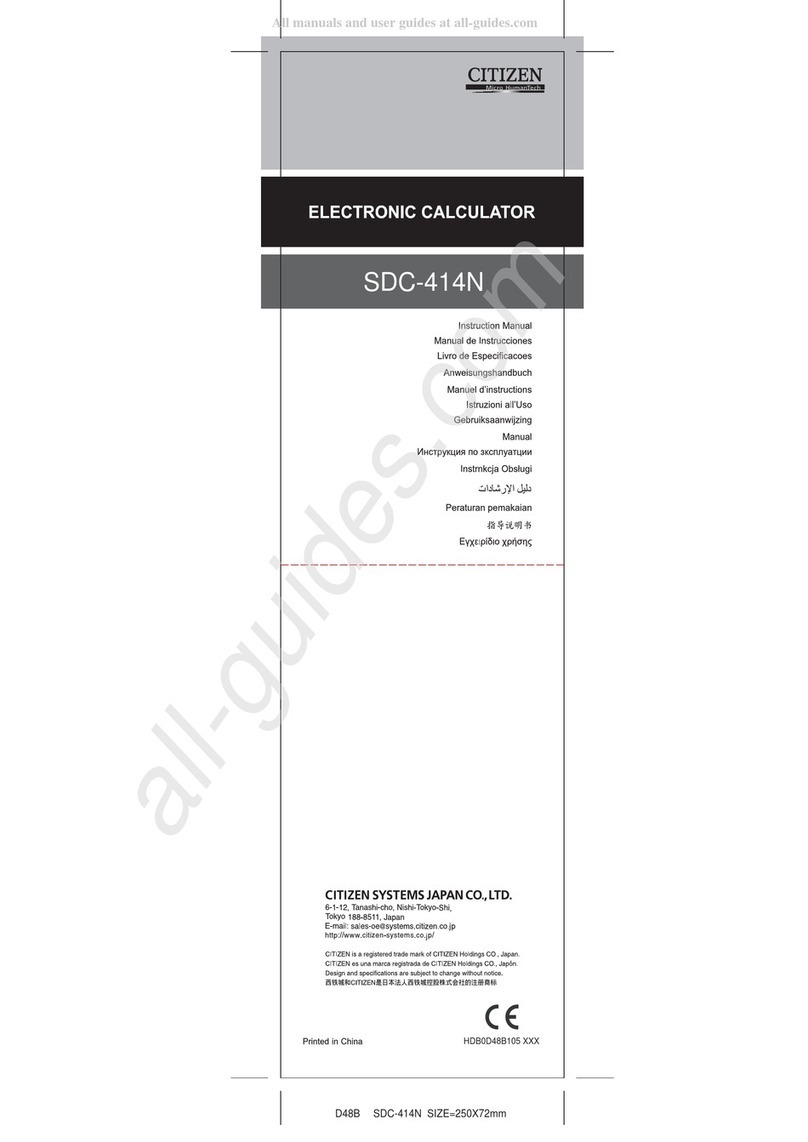Canon Canola MP131L User manual
Other Canon Calculator manuals
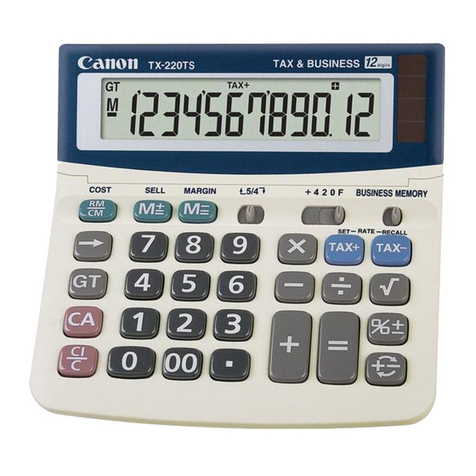
Canon
Canon TX-220TS User manual

Canon
Canon HS-1200TS User manual

Canon
Canon MP27DII User manual
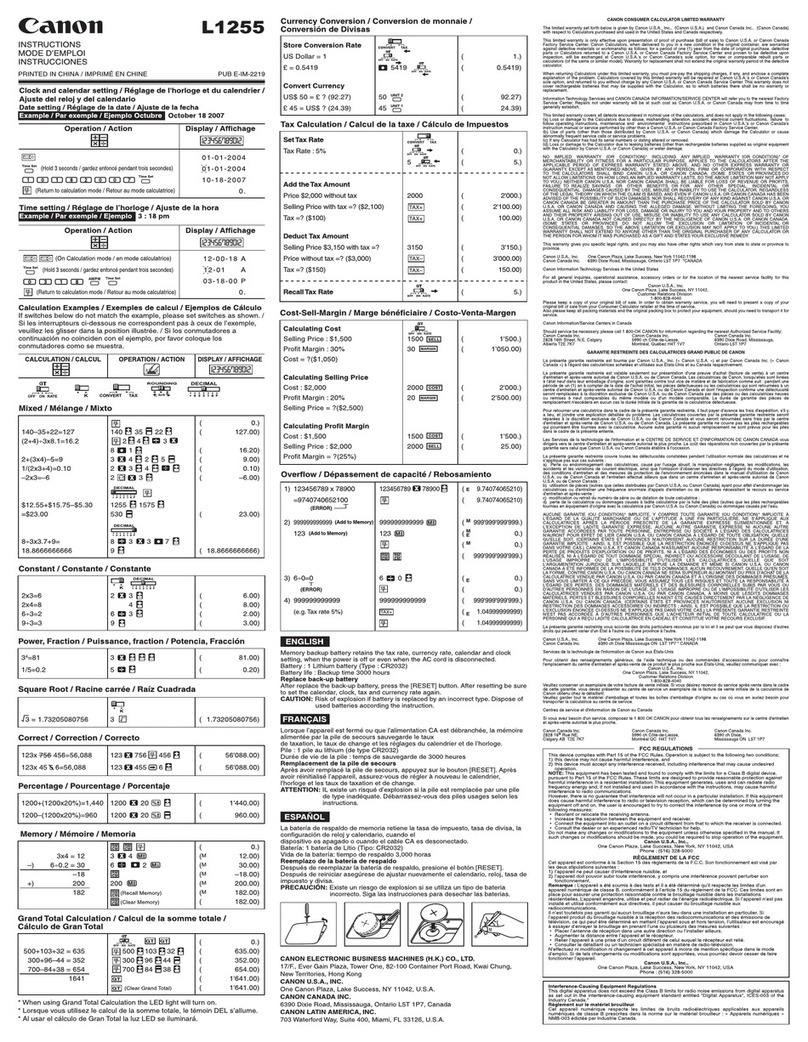
Canon
Canon L1255 User manual

Canon
Canon AS-888 User manual
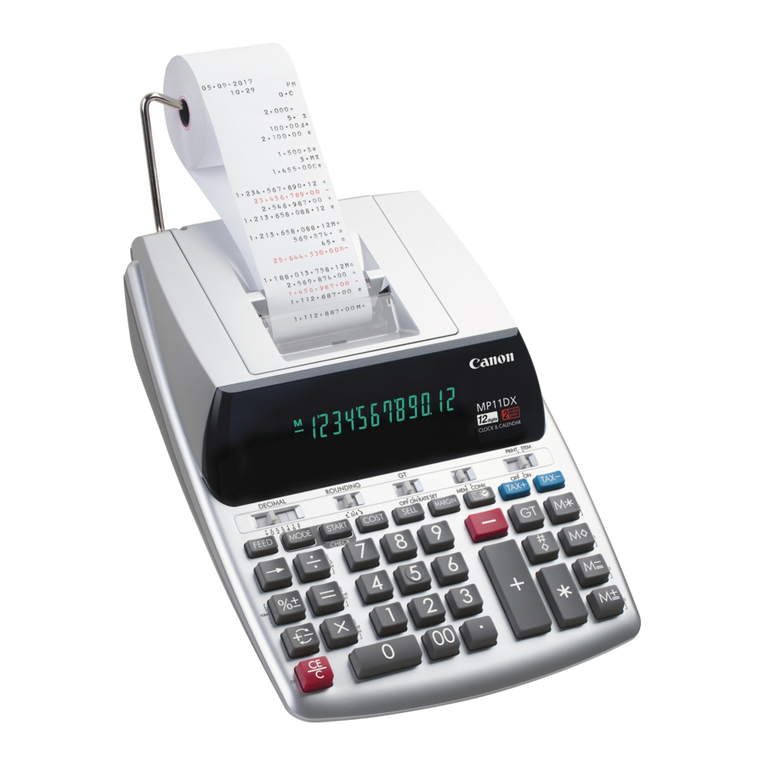
Canon
Canon MP11DX - Printing Calculator User manual
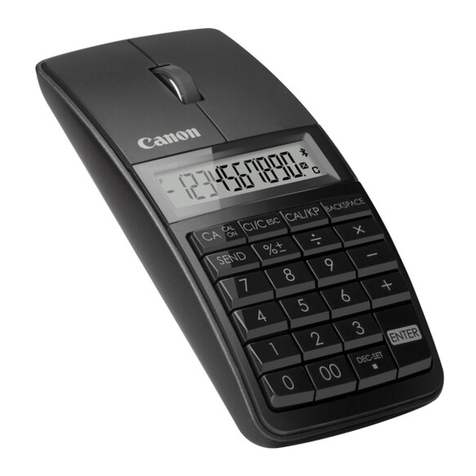
Canon
Canon X Mark I M User manual

Canon
Canon KS-125WUC User manual
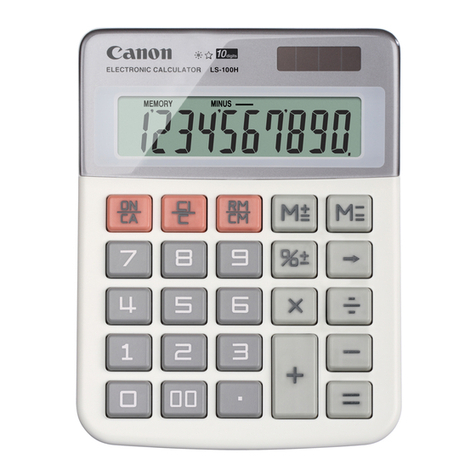
Canon
Canon LS-100H User manual

Canon
Canon P160-DH User manual
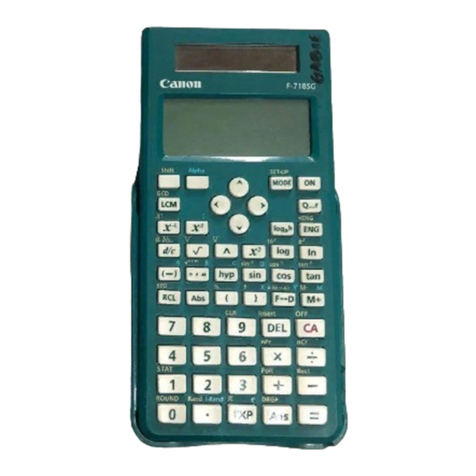
Canon
Canon F-718SG User manual
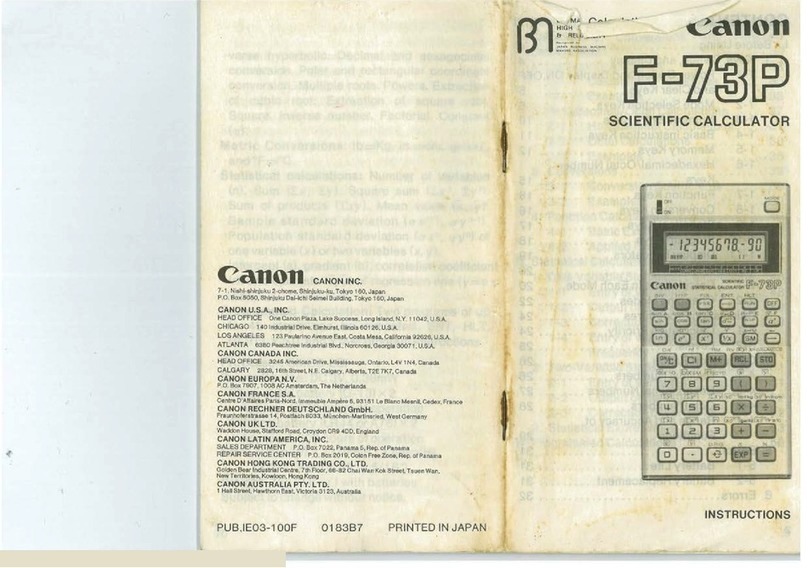
Canon
Canon F-73P User manual

Canon
Canon WS-1410TG User manual

Canon
Canon F-720 User manual

Canon
Canon MP11DX - Printing Calculator User manual

Canon
Canon AS-888 User manual

Canon
Canon AS-1200 User manual
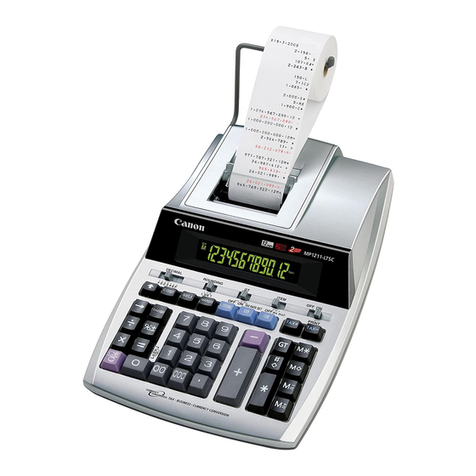
Canon
Canon MP1211-LTSC User manual
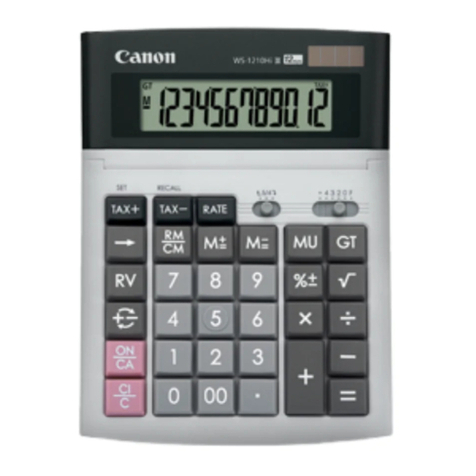
Canon
Canon WS-1210Hi III User manual
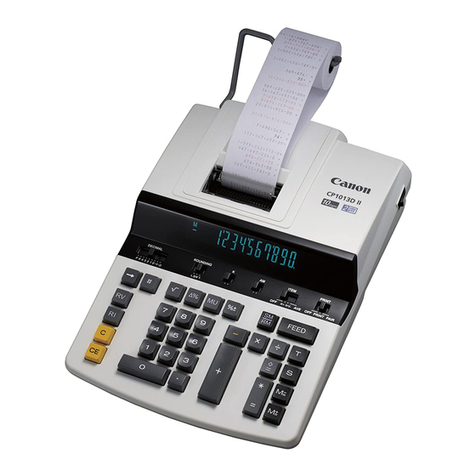
Canon
Canon CP1013D II Manual
Popular Calculator manuals by other brands

Texas Instruments
Texas Instruments BA II Plus user guide

Kompernass
Kompernass KH 2283 instruction manual

Helwett Packard
Helwett Packard 9100A Operating and programming manual

Calculated Industries
Calculated Industries 3423 user guide

Calculated Industries
Calculated Industries Qualifier Plus IIcx user guide
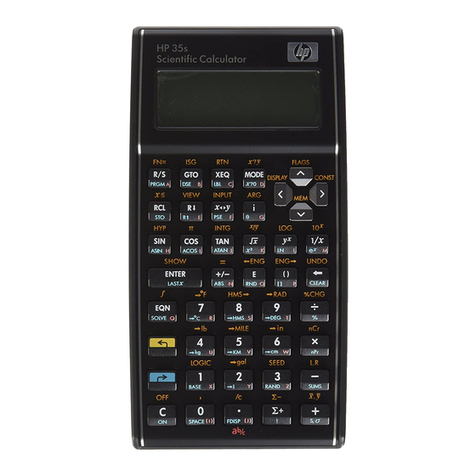
HP
HP 35s Instruction guide
